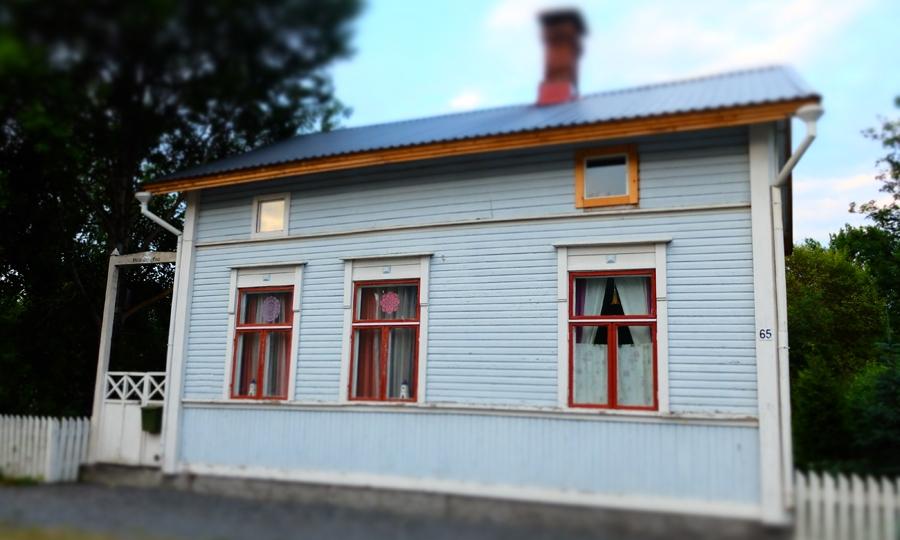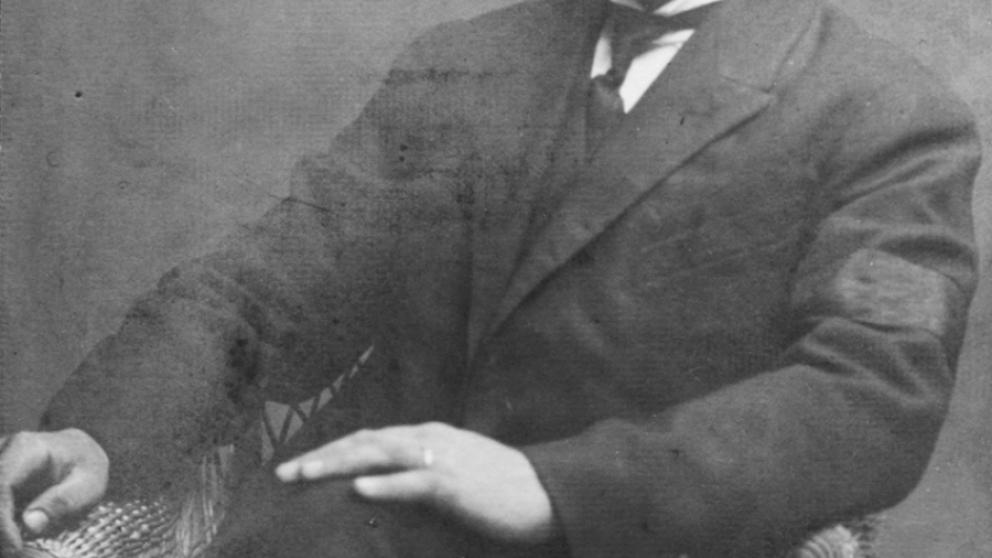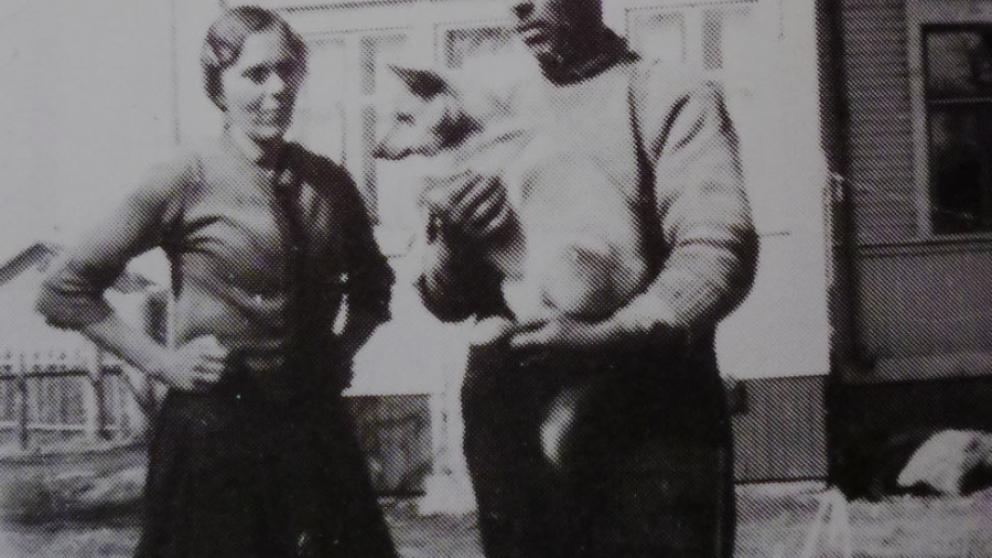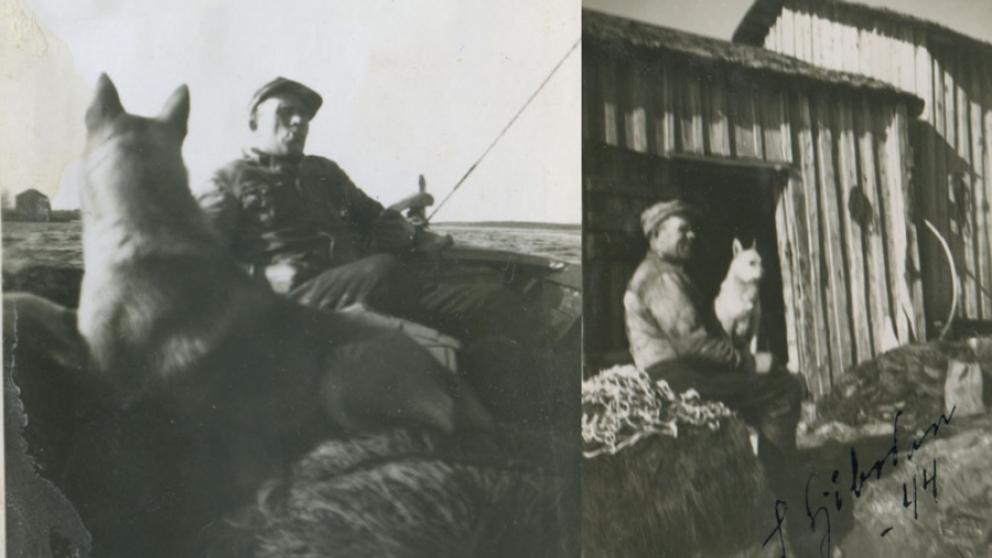
Kyrkogatan 65 - Fisherman John Ekman
John Ekman
Fisherman
(b. 1897 - d. 1970)
John Ekman was one of Kaskinen's last professional fishermen to work along the coast on his own. He lived in this house with his wife Serafina.
John Ekman's family was originally from the neighbouring Närpiö, and his father had even spent some years in the United States in his youth, in Montana. After marrying, John's father settled on Eskilsö, the closest island to Kaskinen. The little boy got to know fishing and hunting very well.
John was still a teenager when he started working. He began his career by helping out on other fishermen's boats.
In 1915, when John Ekman was 18, his neighbour Karl Norrgård died. John was given his position and fishing rights among those handling fishing boats. Three years later, Ekman also obtained Norrgård's young widow, Augusta. With this marriage, Ekman became the owner of this house, at Kirkkokatu 65, which Karl Norrgård had built himself. And Norrgård's fishing boat, fishing gear, boat shed, and pier too were now Ekman's.
The marriage to Augusta did not last very long. She died only a few years later, in 1924, and Ekman was left a widower. Two years later, he fell in love with Serafina 'Fina' Mickelsdotter Pellfolk, who had biked from Närpiö to a party in Kaskinen. They grew old together in this house and had one daughter, Iris.
Ekman was a somewhat old-fashioned fisherman. He preferred to work alone, unlike most other fishermen, who worked in teams. Also, he chose to sail whenever there was enough wind, although he had a motor fitted to his boat. Wife Serafina sewed new sails for him from old German flour sacks. Ekman's boat could be recognised from the black German eagle that Serafina had had positioned in the middle of the sail.
Ekman's sailing skills saved him a large amount of money – especially during the war, fuel was very expensive, while wind power came free.
Serafina provided her husband with home-made clothing also. The fishermen's clothes were drenched in flaxseed oil, which made them waterproof. Fishermen of Ekman's day also carried a waterproof lunch bag made from sealskin.
It was not unusual for a fishing trip to take several days. When they headed out to sea, the fishermen would stay the night in a sauna on Tunngrund, one of the outermost islands. There the fishermen could dry their clothes and have a meal. And, of course, tell exciting stories about storms and their other adventures while catching fish.
John Ekman was respected for his extraordinary skill in predicting the weather. Other fishermen would come to him in order to find out when would be a good time to set out to sea. Ekman was also the only one to brave the melting spring ice to hunt for seals. Other fishermen preferred to catch the animals with nets in the autumn.
In the 1960s, the first modern rental flats were built in Kaskinen. John Ekman was offered one of them -- the head of the fishing guild suggested to him: 'It is much nicer to have a water closet than freeze your arse in the outhouse toilet in the winter', to which Ekman replied: "If one is too lazy to go outside for a shit, it is time to die." So this house remained his home until his death, at the age of 72. Serafina lived to be 90 years old.



